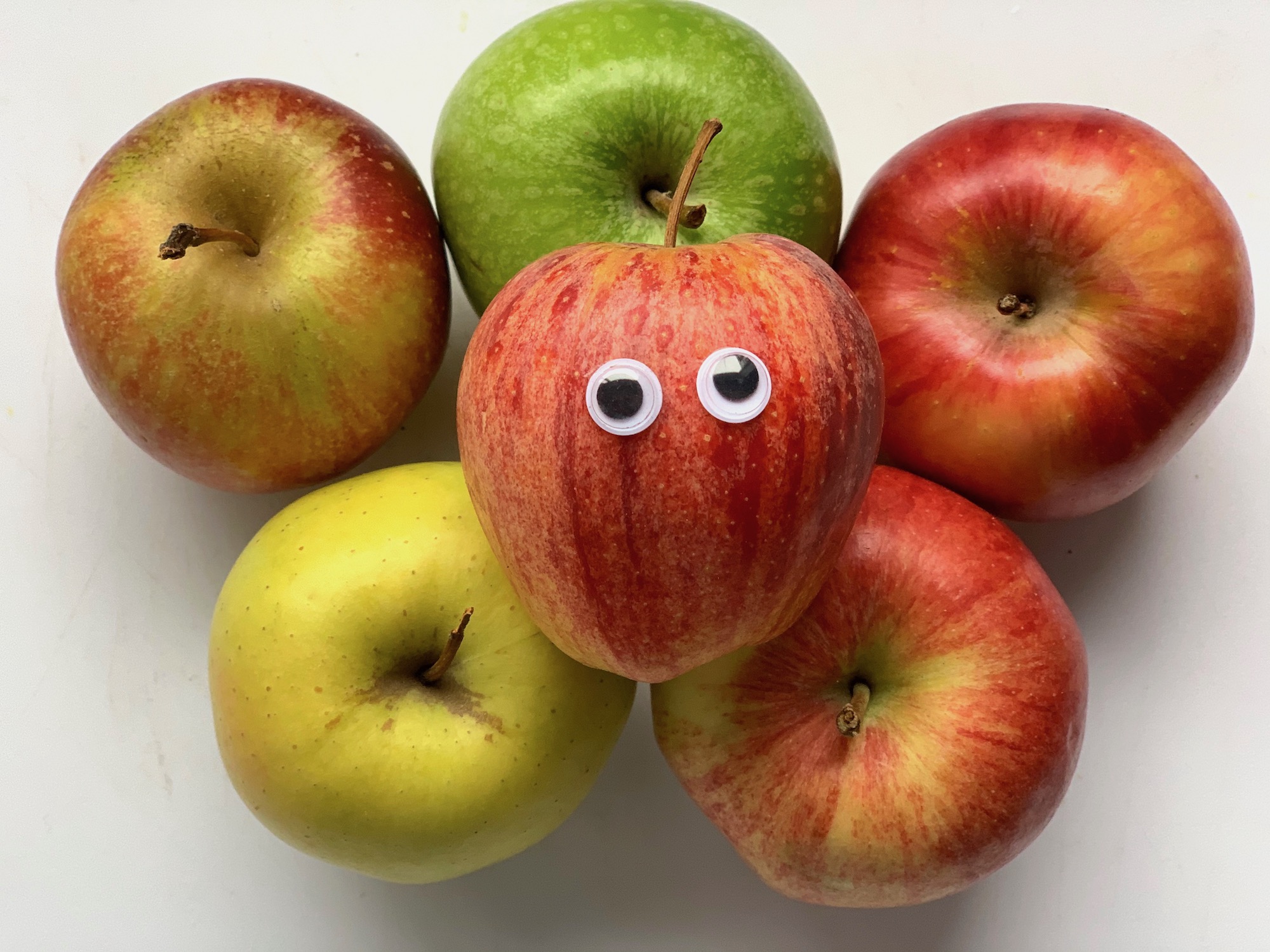What Are Apples?!
The History Of Apples
Apple trees are cultivated worldwide and are the most widely grown species in the Genus Malus a tree that originated in Central Asia and can still be found there today. In fact in 2020, China provided 40.5 of the 86.4 million tonnes of apples produced. Core blimey! Apples have been grown in Asia and Europe for thousands of years and were taken to North America by European colonists.
Apples are significant in many cultures such as the forbidden fruit of Eden in Christianity, the golden apples of the tree of life in Greek mythology and even non-fictional references of poison apples in fairy tales, amongst many others. Making the apple a symbol of seduction.
How Popular Are Apples?
Apples are not just the teacher’s favourite, they are one of our nation’s most loved fruit. Around 122,000 tonnes of apples are consumed every year in the UK – which is enough to fill 325 Olympic-sized swimming pools!
How Should Apples Be Stored?
The Nutritional Benefits Of Apples
They don’t say an apple a day keeps the doctor away for no reason! Apples are a rich source of an array of phytochemicals which are antioxidants and study’s show they may help reduce the risk of a wide range of chronic diseases such as cancer, obesity, heart disease, and type 2 diabetes, and assists in maintenance of good health as part of a balanced diet.
A 100g apple (with the skin) is around 51 calories and made up of 86% water and 12% carbohydrates, with a small fat content.
How Many Varieties Of Apple Are There?
There are thousands of varieties of apple, so seasonality differs, but the typical apple season in the UK spans from late August / September as pollination mostly occurs during May. Summer apples are ready to be harvested starting in early August, however most apples are ready later in the year, usually September/ October time. Commercial crops start between October to March such as Braeburn apples which are a particularly slow growing variety.
Some popular varieties of apple that originate from the UK are Bramley apples founded in Nottinghamshire and Cox’s founded in Buckinghamshire. Although varieties such as Gala, Braeburn and many others are grown in the UK, in order to supply fresh, locally grown apples year-round.
How Do Different Coloured Apples Taste?
The darker the berry the sweeter the juice can also be applied to apples. Redder or pinker apples tend to be sweeter whereas, green apples tend to be more acidic. There are three ways to evaluate the colour of an apple, overall appearance, ground colour and over colour. The over colour or the blush area of the apple is coloured by sunlight meaning apples from shaded areas of the tree won’t always have an over colour. The ground colour is the base colour of the apple, if there is no blush at all it might be the colour of the whole apple and is usually a green /yellow. The overall appearance is subjective but is the ground colour to over colour ratio, so the size of the blush and depth of the colour.
How Are Apples Grown?
As a member of the rose family, apples are produced by pollination. Flower buds begin to grow on the trees in spring; bees are attracted to the flowers and as the bee collects its nectar, it also picks up pollen. When the bee lands on a flower of another apple tree it leaves the pollen grains behind fertilising the ovary of the flower. The fertilised ovules become seeds meaning the outer ovary turns into the flesh of the apple and the inner becomes the apple core.
In summer, the apples grow and change colour and in autumn, the apples ripen. About two weeks before the optimum harvest time, the tree cuts off the apples food supply. Then as Isaac Newton found, the apples naturally fall off if not picked.
How Are Different Varieties Of Apple Created?
Breeding apples is a lengthy process that can take anywhere between 15-30 years for the results of the new variety to be well distinguished. However, there are techniques such as growing seedlings in greenhouses to fast track the process. The most common way of creating a new variety is sexual crossing.
When breeding occurs naturally, apple trees are pollinated by a large number of other apple seedlings, which can lead to a lot of diversity when it comes to varieties. Breeder’s pollination manually as a way of having better control over their new creations.
They do this by taking pollen from the flowers of the male parent and removing the male parts of the flowers on the female parent to stop self-pollination. Then brushing pollen from the male onto the female’s flowers to fertilise the egg cells.
Where Do Our Apples Come From?
At Oliver Kay we source a lot of our apples during the UK season from Kent. We have a great relationship with our suppliers and are advocates of buying British as much as possible.
Types Of Apples
Granny Smith
Bramley Apple
Cox Apple
Gala Apple
Pink Lady
Our Apples
Here you can find some of the varieties of apples we stock, when available. Please contact our team to discuss your requirements, or login to our online ordering or app to place your order.
Recipes With Apples
Here’s some delicious recipe inspiration for your menus using apples.
Kale, Apple, Celery, Walnut & Sultana Salad
Scallops, Cauliflower, Apple And Caramelised Onion
Pumpkin Tarte Tatin, Compressed Apple, Savoury Granola Salad
Join Our Mailing List
By signing up to Oliver Kay e-mails, you confirm that you’re aware your personal data will be used in line with our Terms and Conditions and our Privacy Policy.


